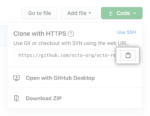Users can now avoid typing Git over and over again with a new interactive shell dedicated to Git commands: gitsh. Created by Ruby on Rails development and consulting firm thoughtbot, gitsh allows users to issue any Git commands, instead of having to run Git commands in general-purpose shells like Zsh or Bash.
“Many of the early Unix utilities, like dc, didn’t take sub-commands like Git and other modern programs do. Instead they launched a shell,” according to thoughtbot’s blog. “For a program like Git, which has so many commands and options, interacting via a shell still makes a lot of sense, and so gitsh follows in this long Unix tradition.”
gitsh was born over a lunch conversation on whether the classic Unix way or the modern sub-command way was more intuitive. After the discussion, Mike Burns, a thoughtbot developer and one of the primary developers on gitsh, thought about it some more and ended up creating a Git shell written in Python.
“I tried using this for a few days, and very quickly found it a much more comfortable way of using Git,” said George Brocklehurst, a thoughtbot developer and one of the primary developers of gitsh. “I started hacking in extra features, like tab completion, in my Friday investment time, and eventually started from scratch with a new version written in Ruby.”
The interactive Git shell is similar to a general-purpose shell, but the sole focus is on Git tasks.
“The focus lets us integrate more deeply with Git than you’d necessarily want to in a general-purpose shell,” said Brocklehurst. “By having a Git-aware environment, there’s a lot of potential to take advantage of a tool that understands the state of the repository.”
gitsh features include:
Status: gitsh allows a user to check his or her status after any command. All a user has to do is hit return without entering a command.
Environmental variables: gitsh allows users to make temporary modifications to their Git configuration with gitsh configuration variables.
Tab completion: gitsh provides users with tab completion for Git commands, branch names, paths, and the name and status of the current branch, without having to modify shell settings and without any extra setup for third-party Git commands and aliases.
More information about gitsh can be found here.






